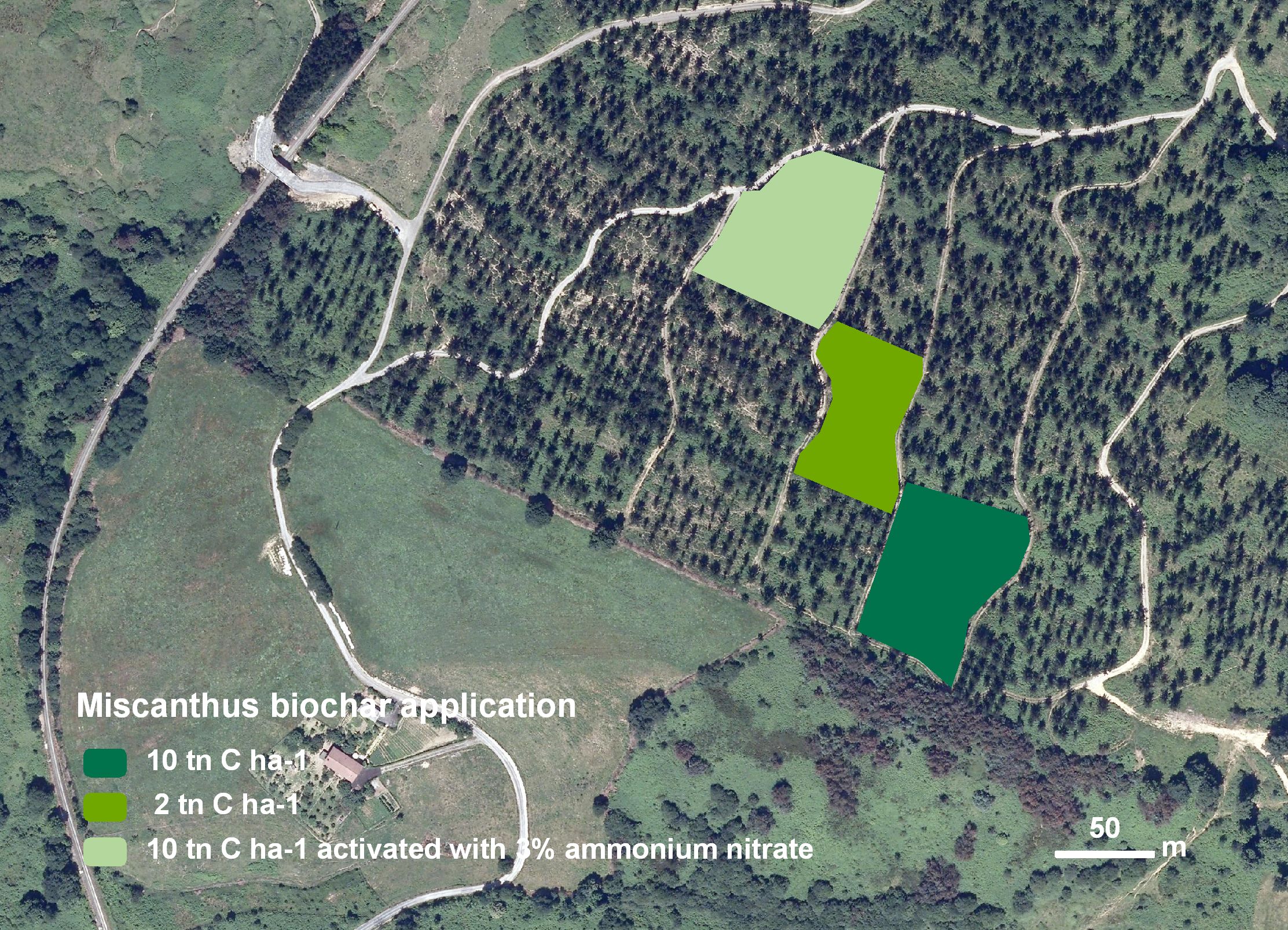DS19
Site code DS19
Location Karrantza
Region Basque Country
Country Spain
Local name Huerto semillero
Partner NEIKER
Site characteristics
Orientation: NW, Slope:20.0°, Soil :CAMBISOLS, Bedrock : clayey sandstone
PH :5.0,
Short History of the site
 copyrigth IEFC network
copyrigth IEFC networkThe sylvicultural option to be demonstrated is the application of biochar (B) to forest soils to improve soil water holding capacity in order to adapt to Climate Change. A randomized complete block design was used to establish the experiment (3 blocks and 3 replicates per block) and the experimental treatments consist of 9 Mg C/ha of B, 3 Mg C/ha of B, 9 Mg C/ha of B + 200kg ammonium nitrate. Each plot covered 64 m2 with 4 trees inside. The demonstration site is located in the radiata pine seed orchard that was established in 1996. It is owned by the municipality and managed by the forestry service of the Provincial Council of Bizkaia (BFA). The climate data comes from WORLDCLIM- Global Climate data for the reference period 1950-2000 except for the frost days figure that has been recorded from the closest point in the CRU_CL_2.0 gridded datasets. It has to be pointed out that WORLDCLIM underestimates precipitation for the region and that CRU overestimates the number of frost days. Monitoring planned for the future: TEMPERATURE, PRECIPITATION AND THROUGHFALL: A weather station is established in the demonstration site and several rain gauges under the canopy. SOIL WATER CONTENT: Soil moisture will continuously be monitored using soil moisture sensors. SOIL WATER HOLDING CAPACITY: Low and erratic rainfall could be a major constraint for forestry in any Climate Change scenario. Besides, big amount of this rainfall disappears as runoff. Addition of biochar to soils could improve the ability of the soil to absorb and store water and therefore avoid this surface runoff. One of the most important soil physical characteristics is the capacity to store the acquired moisture in the root zone and release it to plant roots, referred to as soil water holding capacity. TOXICITY: The potential of biochar to be a source of soil contamination needs to be evaluated, not only with concern to the biochar product itself, but also to soil type and environmental conditions. GROWTH: One of the best documented consequences of water stress is stomatal closure as a results of loss of turgor in leaf cells: this leads to reduction in photosynthesis and hence reduced growth. aggregate stability: The aggregate stability of a soil is the resistance of soil structure against mechanical or physicochemical destructive forces. Among the mechanical destructive forces is the raindrop splash that could gain importance as extreme events due to Climate Change would increase. Soil structure is one of the main factors controlling plant growth by its influence on root penetration, soil temperature and gas diffusion, water transport and seedling emergence and therefore it is an important soil characteristic for foresters. NUTRIENTS STATUS: Nutrients and their relative proportions to each others in trees are important for tree vitality. Trees subjected to nutrient imbalances continue to grow, but the plant must divert more resources in translocation of critical nutrients and may become more sensitive to environmental stress, for instance frost and drought. Environmental stress changes physiological and chemical conditions within the trees which predisposes the trees to lethal attacks by opportunistic pathogenic organisms.
